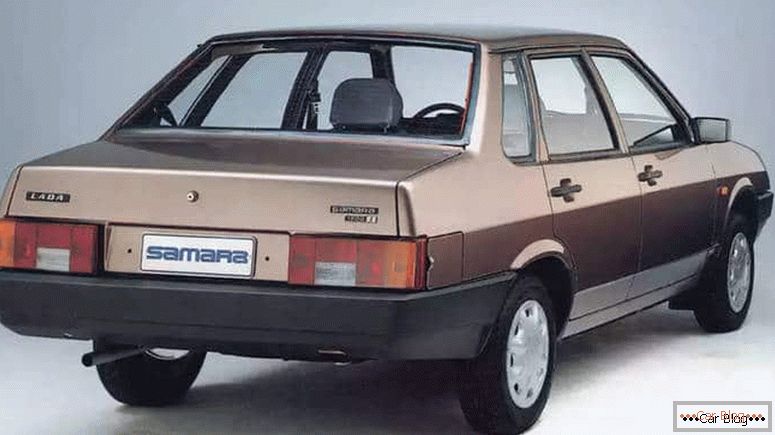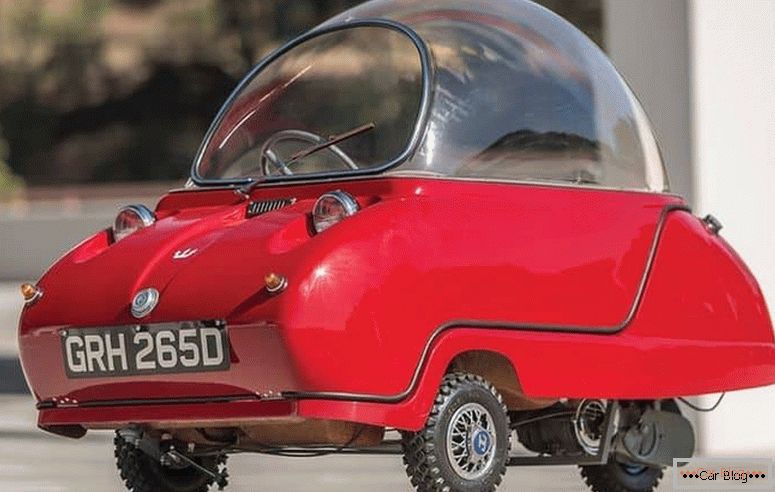Metal corrosion (or rusting) is a ruthless scourge for any car body. It occurs in the most unexpected places in all sorts of manifestations under the influence of destructive factors on the metal. First of all, it is high humidity, water, snow, road dust, dirt. The negative impact is exacerbated by the widespread use of aggressive chemical reagents, salt, sand during ice.
Rust spoils the look, destroys the car. Moreover, the process is like a mountain avalanche: it is necessary to appear a tiny hotbed of corrosion, as it begins to grow literally "before our eyes," absorbing all new areas of the body.
Having barely noticed this unpleasant phenomenon, one must immediately start fighting it! The main weapon in this fight is speed. After all, in just a few months it will take much more time, effort and material costs to restore damaged places.
Content
- 1 Preparation for rust removal
- 2 Rust removal from car body parts
- 2.1 Mechanical method of cleaning from rust
- 2.2 Chemical method of cleaning from rust
- 3 8 tips instead of a conclusion
Rust removal preparation
The first step is to provide a place to work in order to get easy and convenient access to any part of the body. Then you should remove the overhead elements (bumpers, headlights, grilles, etc.) and my car properly. Otherwise, some rusty areas will be hidden from your eyes.
It is better to wash the car at the car wash, but you can do it yourself - with the obligatory use of a good car shampoo.
Next, we carry out a thorough inspection, which will reveal rust-damaged places. Particular attention should be paid to "risk zones": thresholds, wheel arches, the lower surface of the doors. Foci of corrosion are distinguished by severity and appearance. On the body of the car you can find the following symptoms of rust:
-
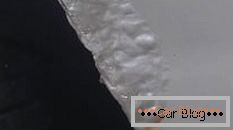
- Cosmetic rust on metal
-
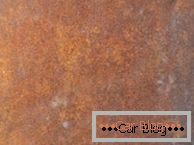
- Surface rust on the metal
-
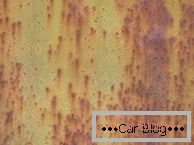
- Ulcerative and punctate rust on the metal
-
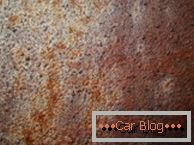
- Porous rust on the metal
-
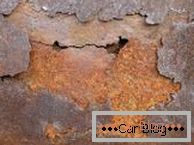
- Laminated rust on the metal
-
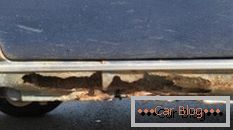
- Through rust on metal
- cosmetic in the form of a violation of the paint coating - clouding, loss of gloss, swelling, cracking, peeling. Most often occur in places of contact of body elements with applied parts (bumpers, headlights, glasses, handles, etc.);
- superficialHaving the appearance of smooth reddish spots, are observed in the early stages of rust development. They are characterized by a small depth of penetration into the metal, are located in local areas;
- ulcers arise at selected points. Rust struck the metal in small or medium depth and area. Appear usually in places of mechanical damage;
- point represent the "patterns", consisting of small dots. Have a great depth. Grow rapidly in depth and breadth;
- porous - loose reddish-brown spots. Rust began to penetrate, the top layer of metal is destroyed. The area of the damaged areas increases, the spots close together;
- layered - metal takes the form of "leaves", stratifying on separate plates;
- through - the last stage, nothing more to collapse. The edges of the “holes” are rapidly “eaten up” by rust, expanding the damaged area. Very soon, the repair will be impossible, you will need a complete replacement of body parts.
Having determined the type and amount of damage, we ask ourselves the questions: “is it possible to remove rust from the car body with your own hands” and “what will be needed to combat rust”.
See also: How to remove tintRust removal from car body parts
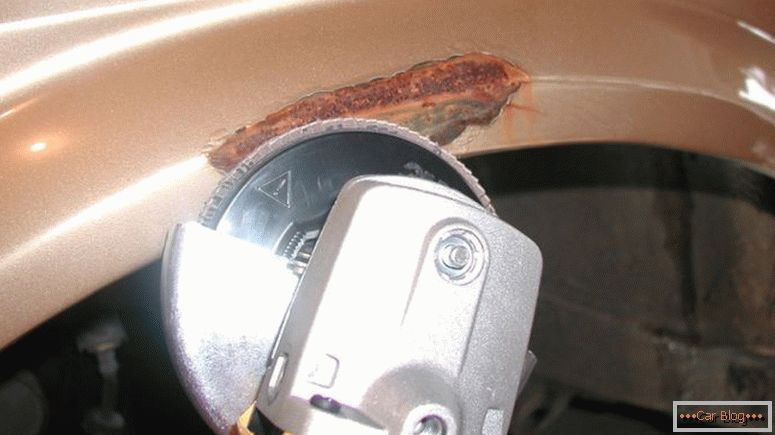
Removing rust from metal using grinders. Pay attention to the used disk
The process itself is not something ultra-complex. If you know exactly how to remove rust from metal, strictly follow some rules, then this work is not only feasible, but can be done at a decent level.
Cleaning the corrosive focus involves removing rust, damaged paintwork and possible dirt residues after washing. This is perhaps the most demanding work in all body repair: lack of thoroughness will inevitably lead to rust growths under the paintwork. Take in processing a somewhat larger area than the defect takes - this will allow you to successfully hide the repair location in the future. On the contrary: capturing an excessive stripping zone will lead to problems at the final finishing stage. Be sure to put paper strips along the contour of the damaged area, securing them with masking tape.
To clean metal from rust, there are two traditional methods - mechanical and chemical. The third one can be found on the Internet (electrochemical), but this is another “song” - metal corrosion protection.
Mechanical method of cleaning from rust
Many prefer it due to the fact that metal does not precipitate residues of chemical reagents that can break the adhesion with paint or putty. The ideal option is to use a tool specially designed for car repairs. For mechanical stripping can be used:
- Sandblasting apparatus or installation. Processing fine sand under high pressure acts very effectively. At the same time, there are no notches from the tool - later it will be necessary to putty less. But this method is not always available.
- Angle grinder (Bulgarian). Usually used for stripping large areas. No need to use coarse-grained discs, because in combination with high revolutions of the grinder in one pass a thick layer of metal will be removed. After such zeal, holes may appear where they were not originally present. During work, do not rush, often wipe the treated area from dust and inspect it.
- Brush on metal. It can be manual, but it is better to take a special brush attachment for a drill, which saves a lot of energy and saves time, especially when processing large areas.
- Sandpaper. First, you need coarse-grained (120), then you need to reduce the graininess to 400 and 600. Some "experts" advise using the numbers 100, 80 and even 40, but this grain leaves deep scratches, which will have to be additionally putty, because no primer and paint will hide them.
When processing metal with sandpaper, do not try to “grab a bigger piece” - clean the body in small sections. If you moisten the paper with water, then the process of removing rust goes faster, without the formation of dust. It is even better to organize a constant supply of water to the site being cleaned. More expensive and effective alternative to water - White spirit.
Ideally, after a mechanical stripping, a surface with a metallic luster should be obtained, without any protrusions.
See also: Selection of janitors for car brandChemical method of cleaning from rust
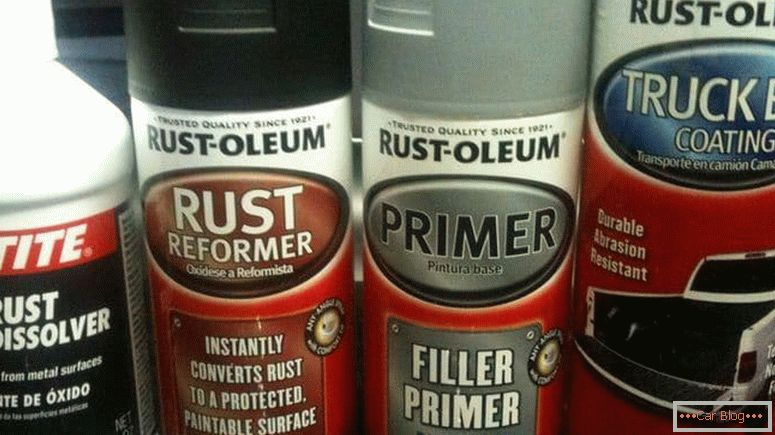
The range of rust converters is extensive. It is important to find exactly the right one.
The name of the method speaks for itself: cleaning is carried out by one or another chemical means. It is recommended that, prior to their use, it is recommended to remove rust using a mechanical tool (since no “chemistry” can smooth out any irregularities) and wash it well with water.
Chemical rust removers can be divided into 2 classes:
- "Assistants"which will always be found in the household. Firstly – these are liquids with the highest penetration ability: vinegar and kerosene (slightly worse). Apply them or not apply – business car enthusiast. Suitable adherents of the opinion that folk remedies better than any modern technology to remove rust. It is necessary to moisten a rag abundantly and wipe the rust several times. Then put a rag on the repaired area and leave for an hour or two. After that, wipe the surface again. It is better to use in places difficult for mechanical tools;
- rust modifiers (modifiers) - chemical compounds produced by the industry in bottles or spray cans. Depending on the composition, they can soften (dissolve) rust, convert it into a harmless chemical compound, create a surface protective layer (some converters also serve as a primer). On sale there are also drugs that have a complex effect. The overwhelming mass of modifiers basically contains orthophosphoric acid, which dissolves rust very effectively. The most popular among motorists is, perhaps, the rust converter manufactured under the brand name "Tsinkar". The reason for the popularity lies in the fact that it contains salts of manganese and zinc. As a result of the “Tsinkar” action, iron oxides are converted into a very durable phosphate layer, which prevents the formation of rust.
8 tips instead of a conclusion
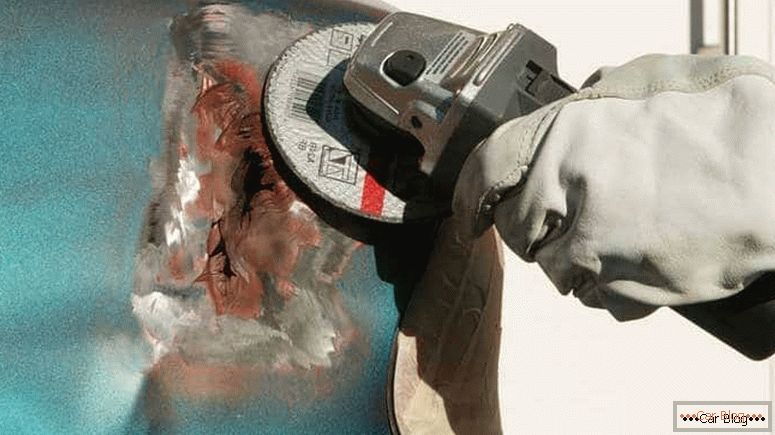
!!! Do not use the cutting wheel: it is dangerous and leads to the cutting of the metal body
Now you know how to remove rust from metal yourself. It remains to reveal a few little secrets.
- Never try to hide rust. – it must be carefully removed. Otherwise, "more expensive."
- Do not do "monkey work". After removing the rust, do not forget to protect the cleaned areas from subsequent corrosion.
- Aggressive substances that may be present in the chemical compositions of rust converters often result in deterioration of the paintwork, both existing and applied in the future. Also not always obvious are the effectiveness and safety of the product. Therefore, before applying, test it on a piece of iron with rust and on a painted area that you plan to upgrade.
- Strictly follow the manufacturer's instructions for use, so as not to ruin the case.
- In the sprayer you purchased, it may not be at all the content you expected. Look at the point of sale, its staff, carefully study the labeling on the packaging, look for reviews about the product. This will save time and money, save from disappointment.
- Clean and degrease the work surface often. White spirit will do. Do not use nitrocoloring solvents (such as acetone).
- Take care of your health. Use protective equipment for eyes, skin, respiratory organs. Air the room.
- Be skeptical and humorous about the advice to degrease with “Fairy”, and remove rust using lemon / tomato / potato juice, lactic acid, soda, ketchup, and other exotics.

